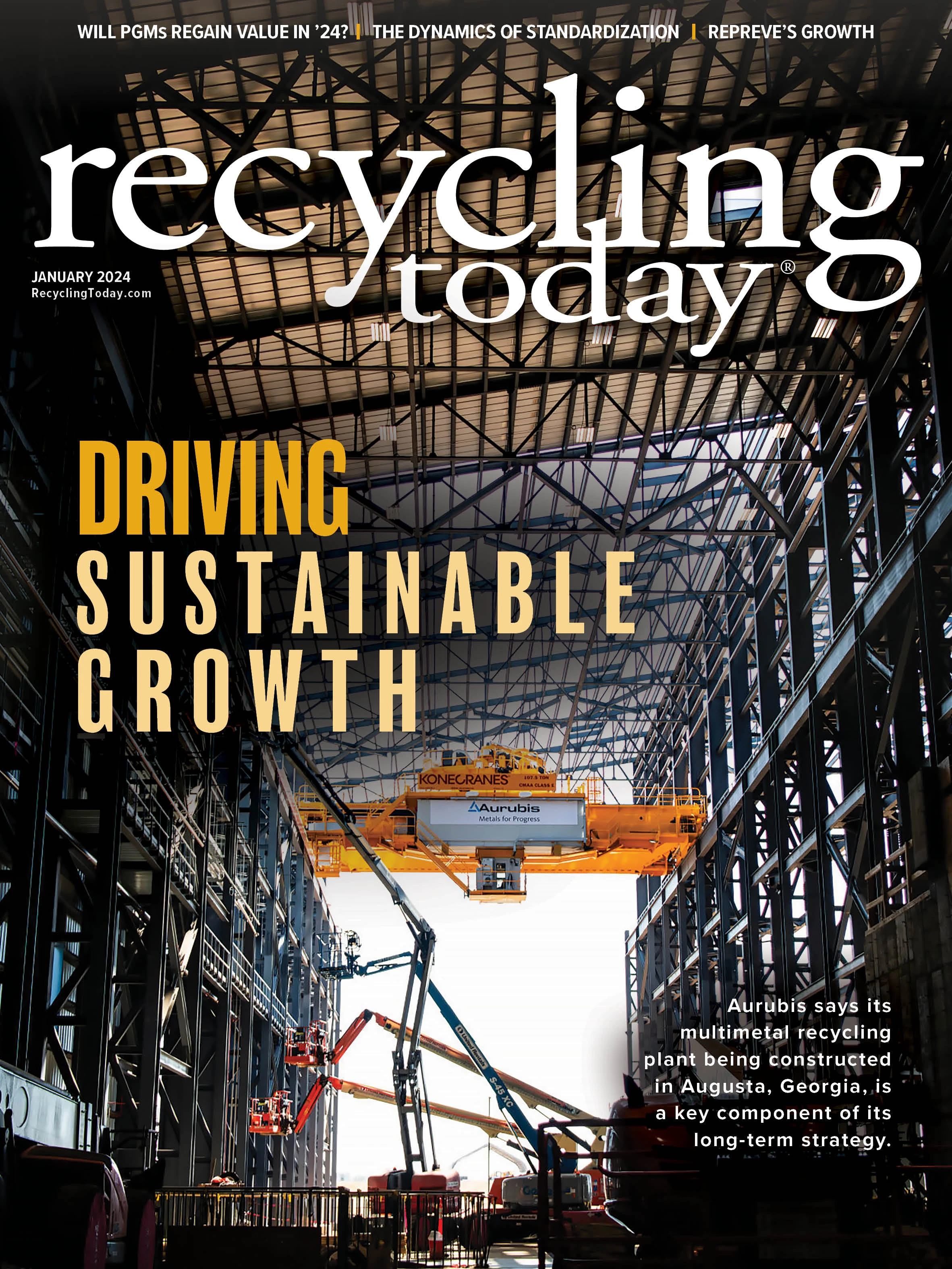Domestic demand for aluminum scrap was largely weak in 2023, with destocking of semifinished goods having a significant effect on sales. “There is still some destocking that needs to take place for the market to be in equilibrium,” says Chad Kripke, president of Kripke Enterprises Inc., Toledo, Ohio.
“Barring any major downturn in manufacturing, the market should return to what we might perceive as ‘normal’ in the second half of 2024,” he continues. “The timing of which lines up well with new greenfield casting projects coming online, which will be very scrap intensive. If all the legacy mills and new cast houses are running at full capacity, there could quickly be a deficit of scrap in the U.S.”
In the meantime, however, Kripke says as of late November 2023, order books on billet seemingly have yet to take shape for 2024. “I get the feeling most billet casting operations have only committed to a subsistence amount of scrap they know they will need for regular operations but are hesitant to over commit and definitely not able to be aggressive on spreads,” he says.
“Barring any major downturn in manufacturing, the market should return to what we might perceive as ‘normal’ in the second half of 2024. The timing of which lines up well with new greenfield casting projects coming online, which will be very scrap intensive.” – Chad Kripke, president of Kripke Enterprises Inc.
As of November of last year, some consumers of aluminum scrap weren’t taking delivery of new orders until January, Kripke says, with several facilities taking longer-than-usual breaks for planned maintenance projects at year-end.
In the December 2023 Bureau of International Recycling “World Mirror on Non-Ferrous Metals,” Rick Dobkin of Shapiro Metals, St. Louis, writes, “The metals business seems to have settled into holiday and end-of-year inventory slowdowns. Many rolling mills are out of the markets until 2024 as they reduce inventories for the end of the year. Billet producers, although slow, are active in the spot scrap marketplace at present; their demand for scrap seems to be a reaction to slower extrusion production, which leads to less revert metal coming back to the cast house. Die cast business is stable and returning to normal levels following the end of the UAW strikes.”
As of November 2023, can sheet producers also were starting to reenter the market, with Kripke predicting they would have stronger appetites in the first quarter of this year.

“Secondary smelters appeared to be the beneficiaries of the wide scrap spreads,” Kripke adds, “having little issue finding what metal they needed, which may have been of higher quality due to pricing parity on some grades with sheet mills.”
He says primary aluminum producers have entered the domestic market, forced by the decarbonization trend. “This is evident in Rio Tinto’s recent purchase of a stake in Matalco."
In the red metals sector, “Domestic copper consumers are trying to widen spreads as demand is a little off but are getting pushback amid brisk export interest,” Dobkin says.
Sponsored Content
Labor that Works
With 25 years of experience, Leadpoint delivers cost-effective workforce solutions tailored to your needs. We handle the recruiting, hiring, training, and onboarding to deliver stable, productive, and safety-focused teams. Our commitment to safety and quality ensures peace of mind with a reliable workforce that helps you achieve your goals.
Get curated news on YOUR industry.
Enter your email to receive our newsletters.

Explore the January 2024 Issue
Check out more from this issue and find your next story to read.
Latest from Recycling Today
- S3 Recycling Solutions acquires Electronics Recycling Solutions
- Nextek, Coveris to recycle food-grade plastic film
- Recyclekaro expands recycling capacity
- USTR hears comments on port fee proposal
- C&D World 2025 hits record attendance and exhibitor numbers
- Denali now offers mobile depackaging service
- Hyundai confirms Louisiana as EAF mill site
- ASCE sees infrastructure progress, but more to be done








